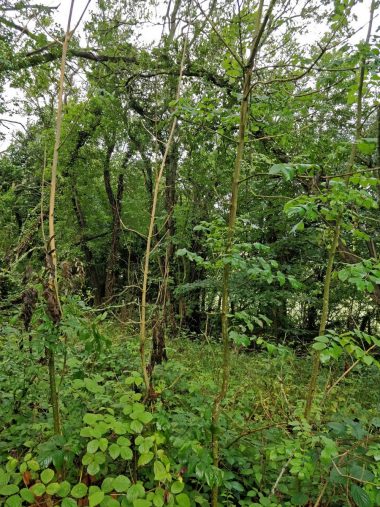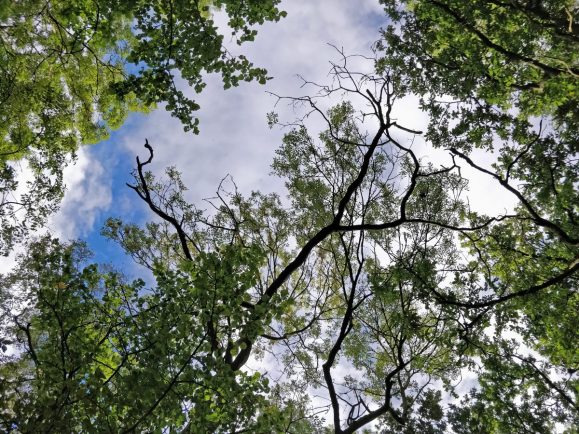THE ARRIVAL of a disease at a Hanbury nature reserve is being turned into a positive opportunity to help veteran trees survive.
The Worcestershire Wildlife Trust is due to undertake tree felling along the roadside edge of Piper’s Hill and Dodderhill Common, known locally as Hanbury Woods.

Picture by Eleanor Reast. s
The work, due to start tomorrow, is being undertaken for health and safety reasons but the charity is using the opportunity to also provide breathing space for some of the wood’s veteran trees.
Eleanor Reast, the Trust’s officer responsible for the nature reserve, said: “We are taking the arrival of ash dieback in the county seriously and are looking at our sites on a case by case basis.
“We don’t intend to routinely fell our woodland ash trees because we’re hoping to identify disease-resistant individuals.
“However, we have a significant number of ash trees along the roadside at Piper’s Hill and these pose a health and safety risk, particularly to drivers travelling past the nature reserve.
“Even with regular safety inspections, ash dieback can cause large trees to suddenly lose limbs or to fall over.
“Whilst the felling will initially look severe, it is only taking place in a stretch alongside the road.
“We’re taking the opportunity to clear some space around some of the veteran trees in the area, which will provide them with better access to light and nutrients.

Picture by Eleanor Reast. s
“With this extra light and space, these already old oaks can live for several hundred years more.”
A diverse boundary of scrub will provide more nesting and feeding opportunities for wildlife and to better protect the site from pollution from the road.
Ash dieback is now widespread throughout the UK.
The impact on the county’s woodlands is likely to be substantial but the Trust is hoping to find disease-resistant trees that will form the basis for future regeneration.
As part of woodland management for wildlife, the Trust undertakes forestry operations in most of their woodlands each winter.
This involves removing some timber, usually by coppicing trees to just above ground level where they can regrow, to let light into the woodland floor.
Staff are currently targeting diseased ash for removal as part of this work.
The work at Piper’s Hill and Dodderhill Common was due to have taken place last winter but the very wet conditions meant that work was delayed.
Piper’s Hill and Dodderhill Common is a regionally important site for its veteran trees with over 240 growing there.
A tree becomes veteran at different ages depending on the species but most are several hundred years old.
Most of the veterans at Piper’s Hill are oak and sweet chestnut.
In the past Piper’s Hill was a much more open environment known as wood pasture – this can be seen in the widely-spread branches of the trees.
In a process called halo-ing, trees from the immediate area of the veteran trees are removed, which allows the veterans better access to light, water and nutrients.
Eleanor added: “We understand the concern that visitors and passers-by may have when they see such a familiar area change quite quickly but we won’t be removing every tree.
“Our priority here is the safety of road-users but we’re also relieved that, whilst we’re losing some of our ash trees, part of the by-product of this work will benefit the trees that are left behind, particularly the older trees.”
For more information visit www.worcswildlifetrust.co.uk











